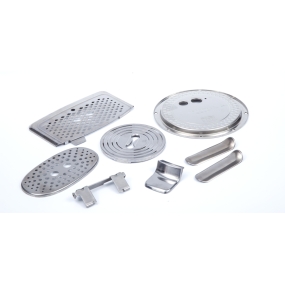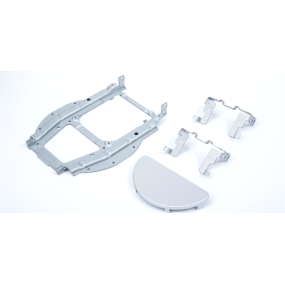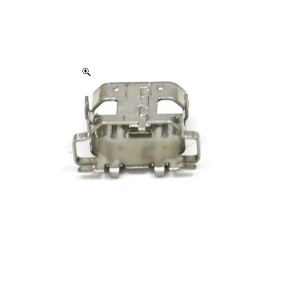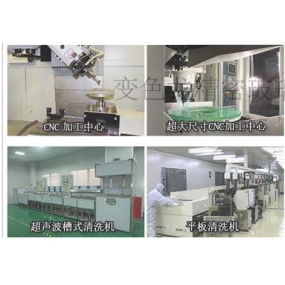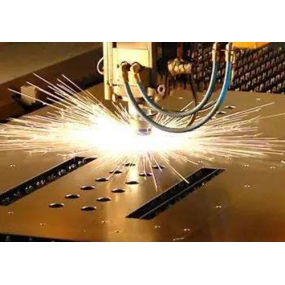1. Impact of natural climate
Sinis terram magnam habet, cum maxima regionibus subtropicos locata est. Temperatura variat multo in anno, et temperatura variat etiam in die. Therefore, people have different ways and degrees of intervention in the indoor temperature (such as workshop) and the temperature around machine tools varies greatly. Exemplo, variatio temperaturae seasonale in regione Delta fluminis Yangtze est circa 45 °C, et variatio temperaturae diurnae est circa 5-12 °C. CNC Machining workshop generally does not have heating in winter and air conditioning in summer, but as long as the workshop has good ventilation, the temperature gradient in the CNC machining workshop does not change much. In regione Northeast, variatio temperaturae seasonale 60 °C attingere potest, et variatio diurnala circa 8-15 °C est. Tempus calefactionis ab novissimo octobro usque ad primum Aprilii sequentis annorum est, et design laboratorii machinatorium calefactum est sed insufficiens circulatio aeris. Differentia temperaturae inter intrinsecus et foris radicatorium est 50 °C. Temperatura temperatura in laboratorio hieme multo complexa est. Menderantque temperatura exterioris 1,5 °C a 8:15-8:35 am, et temperatura intra laboratorium variata est circa 3,5 °C. The machining accuracy of high-speed precision walking machines and precision machine tools will be greatly affected by environmental temperature in such workshops.
2. The impact of the surrounding environment
The surrounding environment of CNC machine tools refers to the thermal environment formed by various layouts within a close range of the machine tool. Sequentes tres aspectus includent.
(1) Workshop microclimate: such as the distribution of temperature in the workshop (vertical and horizontal directions). When the day and night alternate or the climate and ventilation change, the temperature in the workshop will slowly change.
(2) Workshop heat sources, such as solar radiation, heating equipment, and high-power lighting, can directly affect the overall or partial temperature rise of the CNC machine tool for a long time when they are close to it. Operasyon sırasında yakın ekipmanlar tarafından oluşturduğu sıcaklık aracı radyasyon veya hava akışından yükselmesini etkileyecek.
(3) Dissipatio calide: Fondatio habet bonam effectum dissipationis caloris, particular ad instrumenta precision CNC centering machinae. Fondatio non debet prope terram calefactionis pipellinis esse. Quando interrumpit et fluit, difficile est causam caloris invenire. An open workshop will be a great 'radiator', which is beneficial for temperature balance in the workshop.
(4) Temperatura Constant: Utilisation constantes temperaturae fabricationum in laboratorio multo efficabile est in accuracione et machinitate precision instrumentorum precision centrationis machinarum, sed multam energiam consumit.
3. Internal thermal influencing factors of machine tools
(1) Structural heat source for heart centered CNC machine tools. Electric motors such as spindle motors, feed servo motors, cooling and lubrication pump motors, and electrical control boxes can all generate heat. Haec situatio permissi sunt motori semet ipso, sed habent signa adversa effecta in componentes, sicut spindle et pila, et mensurae adsumentur ut isolarent eos. Quando ingressa energia electrica motor ad operandum conducet, except is parvum (circa 20%) quod in energia thermal a motorica convertetur, multa ex illo in energia kinetica convertetur per motum mechanismum, sicut rotatio spindle, motum operabilissimum etc. However, it is inevitable that a considerable portion of the heat generated during motion will be converted into frictional heat, such as bearings, guide rails, ball screws and transmission boxes.
(2) Cutting heat during the manufacturing process. During the cutting process, a portion of the kinetic energy of the tool or workpiece is consumed as cutting work, while a considerable portion is converted in to deformation energy of cutting and frictional heat between chips and the tool, resulting in heating of the tool, spindle, and workpiece, and a large amount of chip heat is conducted to the worktable fixtures and other components of the machine tool. They will directly affect the relative position between the tool and the workpiece.
(3) Cooling. Cooling is a reversus measure taken to address the temperature rise of the walking machine, such as cooling the electric motor, spindle components and basic structural components. Exalta exterior instrumenta machinae saepe electricam control box cum unitate refrigerationis pro refrigeratione forced equipunt.
4. The influence of the structural form of machines tools on temperature rise
In the field of thermal deformation of CNC machine tools, discussing the structural form of longitudinal cutting CNC machine tools usually refers to issues such as structural form, mass distribution, material properties, and heat source distribution. Formus structural influent distributionem temperaturae, orientem conductionis caloris, orientem deformationis thermalis, et correspondentiam instrumenti machinae.
(1) The structural form of CNC centering machine tools. In terms of overall structure, machine tools include vertical, horizontal, gantry and cantilever types, which have significant differences in thermal response and stability. Exemplo, elevatio temperaturae canice spindle lathi cum transverso geari usque ad 35 °C permanet, causantem verticem elevationem, et tempus equilibrii thermalis circum 2 horas permanet. The inclined bed type precision turning and milling machining center has a stable base for the machine tool. Fortitudo universae machinae significa meliora est, et spinda per servo motor conditur. Partem transmigrationis gear is auferetur, et temperatura maxima minus quam 15 °C est.
(2) The impact of heat source distribution. On machines, it is commonly believed that the heat source refers to the electric motor. Ut motores spindle, motores ferunt et systemas hydraulic as, facta sunt incompletae. Motoris electrici calefactus est solus energia quae a armatura impedance consumata est dum portare cargo, et magna pars energiae a functione frictional is mechanismorum, quales portari, muros, nudes, et dirigentibus. So the electric motor can be called a primary heat source, and the bearings, nuts, guide rails, and chips can be called secondary heat sources. Thermal deformation is the result of the combined influence of all these heat sources.
Temperatura elevatio et deformatio machinae CNC 5 axis ambulantis in motione fertilis Y axis. Cum nutrire in directo Y, tabula opera non movet, ita minor effectus est super deformationem thermalae in directo X. On the column, the further away from the Y-axis guide screw, the smaller the temperature rises.
The situation of the machine moving along the Z-axis further illustrates the influence of heat source distribution on thermal deformation. Flumen Z-axis longius ab axis X est, ita effectus deformation is thermalis minor est. Plus proximus matriculum Z-axis est columnae, maior temperatura augens et deformatio.
(3) Impectus distributionis qualitatis. The influence of quality distribution on the thermal deformation of machine tools has three aspects. First, it refers to the size and concentration of mass, usually referring to changing the heat capacity and heat transfer rate, and changing the time to reach thermal equilibrium; Secundo, changing the arrangement of quality, such as the arrangement of various reinforcing plates, the thermal strength of the structure can be improved to reduce the influence of thermal deformation or maintain relatively small deformation under the same temperature rise; Tres referit ad reducendum temperaturae componentium instrumentorum machinarum variantem formam qualitatis arrangementi, sicut ad arrangindum funiculos dissipationis caloris extra structuram.
(4) The influence of material properties: Different materials have different thermal performance parameters (specific heat, thermal conductivity, and coefficient of linear expansion), and under the same heat, their temperature rise and deformation are different.


 English
English Spanish
Spanish Arabic
Arabic Portuguese
Portuguese Belarusian
Belarusian Japanese
Japanese Russian
Russian Icelandic
Icelandic Bulgarian
Bulgarian Azerbaijani
Azerbaijani Estonian
Estonian Irish
Irish Polish
Polish Persian
Persian Boolean
Boolean Danish
Danish German
German French
French Filipino
Filipino Finnish
Finnish Korean
Korean Dutch
Dutch Galician
Galician Catalan
Catalan Czech
Czech Croatian
Croatian Latvian
Latvian Romanian
Romanian Maltese
Maltese Malay
Malay Macedonian
Macedonian Norwegian
Norwegian Swedish
Swedish Serbian
Serbian Slovak
Slovak Slovenian
Slovenian Swahili
Swahili Thai
Thai Turkish
Turkish Welsh
Welsh Urdu
Urdu Ukrainian
Ukrainian Greek
Greek Hungarian
Hungarian Italian
Italian Yiddish
Yiddish Indonesian
Indonesian Vietnamese
Vietnamese Haitian Creole
Haitian Creole Spanish Basque
Spanish Basque


